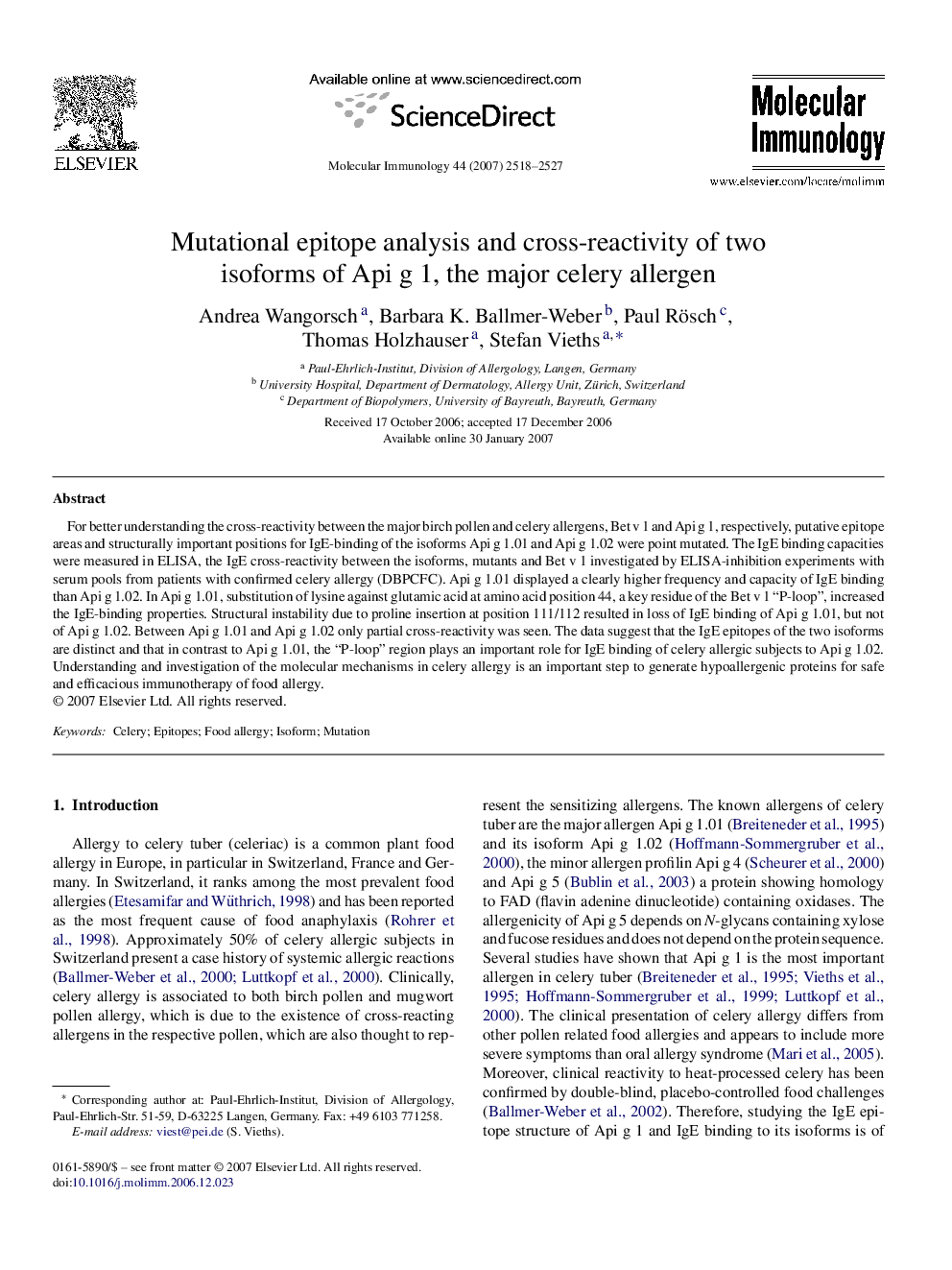| Article ID | Journal | Published Year | Pages | File Type |
|---|---|---|---|---|
| 5918148 | Molecular Immunology | 2007 | 10 Pages |
For better understanding the cross-reactivity between the major birch pollen and celery allergens, Bet v 1 and Api g 1, respectively, putative epitope areas and structurally important positions for IgE-binding of the isoforms Api g 1.01 and Api g 1.02 were point mutated. The IgE binding capacities were measured in ELISA, the IgE cross-reactivity between the isoforms, mutants and Bet v 1 investigated by ELISA-inhibition experiments with serum pools from patients with confirmed celery allergy (DBPCFC). Api g 1.01 displayed a clearly higher frequency and capacity of IgE binding than Api g 1.02. In Api g 1.01, substitution of lysine against glutamic acid at amino acid position 44, a key residue of the Bet v 1 “P-loop”, increased the IgE-binding properties. Structural instability due to proline insertion at position 111/112 resulted in loss of IgE binding of Api g 1.01, but not of Api g 1.02. Between Api g 1.01 and Api g 1.02 only partial cross-reactivity was seen. The data suggest that the IgE epitopes of the two isoforms are distinct and that in contrast to Api g 1.01, the “P-loop” region plays an important role for IgE binding of celery allergic subjects to Api g 1.02. Understanding and investigation of the molecular mechanisms in celery allergy is an important step to generate hypoallergenic proteins for safe and efficacious immunotherapy of food allergy.
